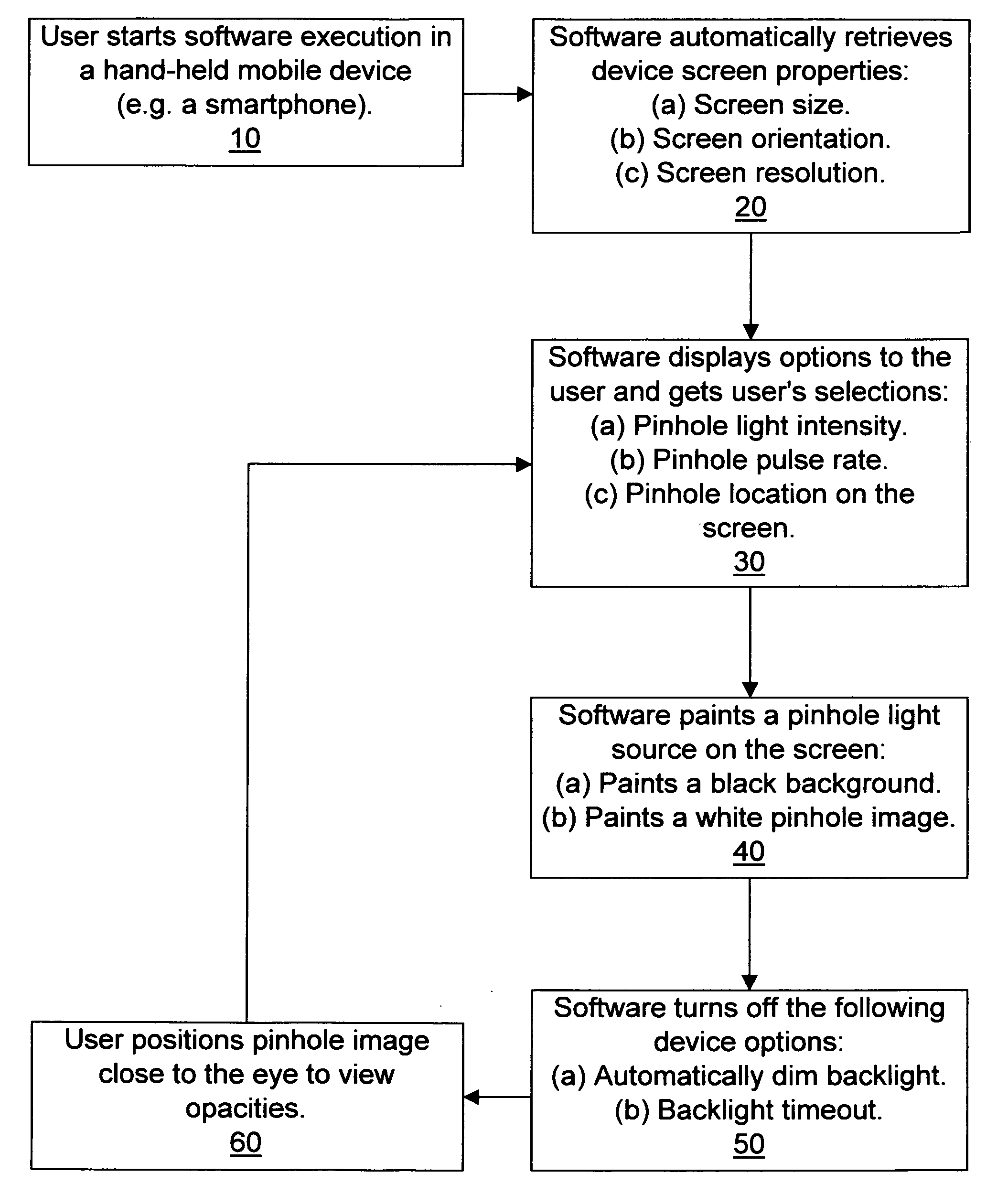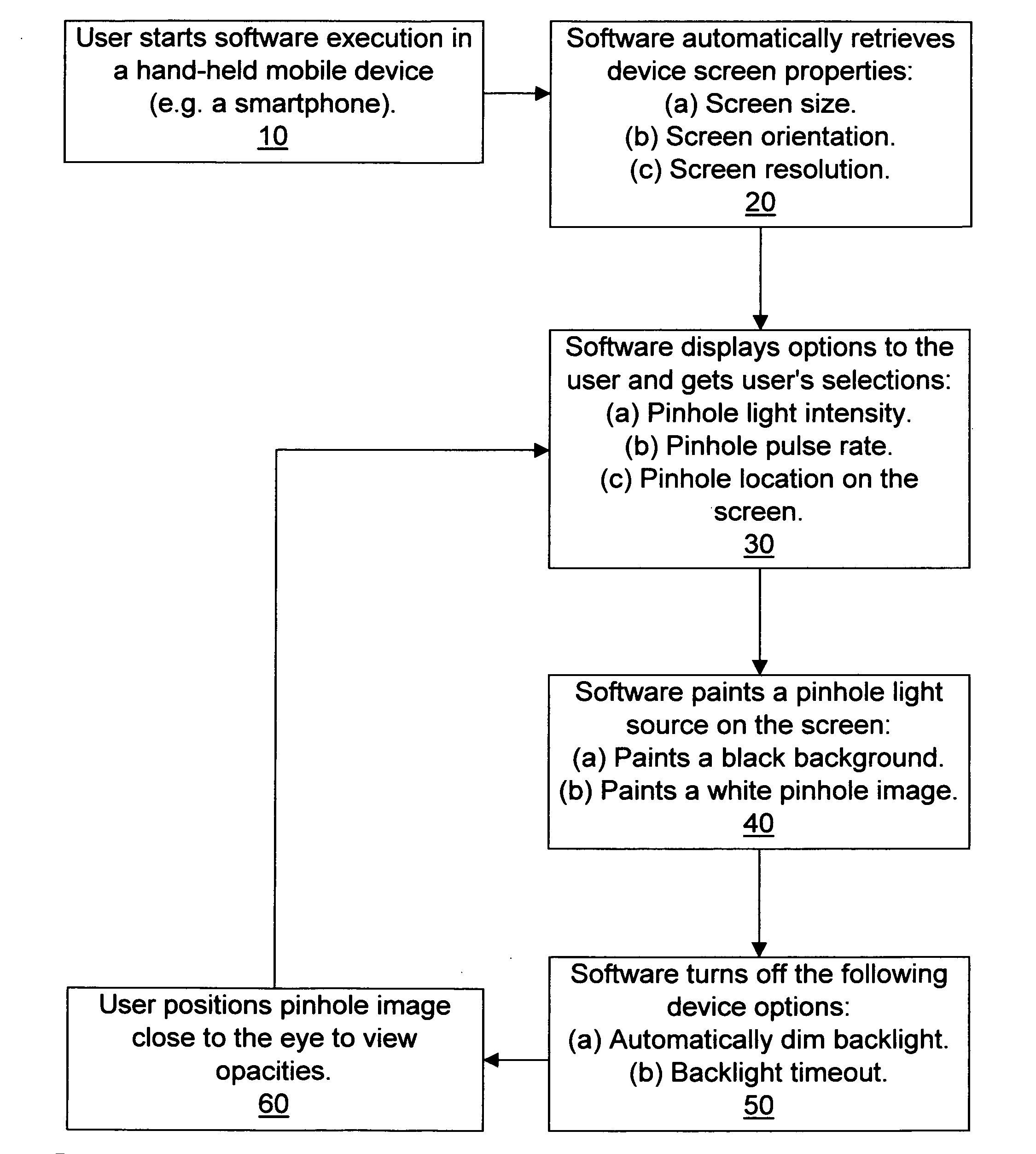Method and apparatus for self-examination of the eye
- Summary
- Abstract
- Description
- Claims
- Application Information
AI Technical Summary
Problems solved by technology
Method used
Image
Examples
Embodiment Construction
[0024]The present invention makes use of hand-held mobile devices, such as cell phones, smartphones, and personal digital assistants (PDAs), for self-examination of the eye.
[0025]Throughout the disclosure, the terms “hand-held mobile device,”“mobile device” and “device” are used interchangeably. Also, the terms “pinhole light source,”“pinhole image” and “pinhole” are used interchangeably. In hand-held mobile devices, “screen brightness” is sometimes called “backlight brightness.”
[0026]In the preferred embodiment, an image depicting a white pinhole light source surrounded by a black background is created on the screen, or display, of the mobile device. The user then positions the pinhole image close to the eye to view opacities.
[0027]The process of the preferred embodiment includes six steps as shown in the sole FIGURE:
[0028]1. The user starts the software execution in the hand-held mobile device (block 10).
[0029]2. The software automatically retrieves from the device the screen prop...
PUM
 Login to View More
Login to View More Abstract
Description
Claims
Application Information
 Login to View More
Login to View More - R&D
- Intellectual Property
- Life Sciences
- Materials
- Tech Scout
- Unparalleled Data Quality
- Higher Quality Content
- 60% Fewer Hallucinations
Browse by: Latest US Patents, China's latest patents, Technical Efficacy Thesaurus, Application Domain, Technology Topic, Popular Technical Reports.
© 2025 PatSnap. All rights reserved.Legal|Privacy policy|Modern Slavery Act Transparency Statement|Sitemap|About US| Contact US: help@patsnap.com


